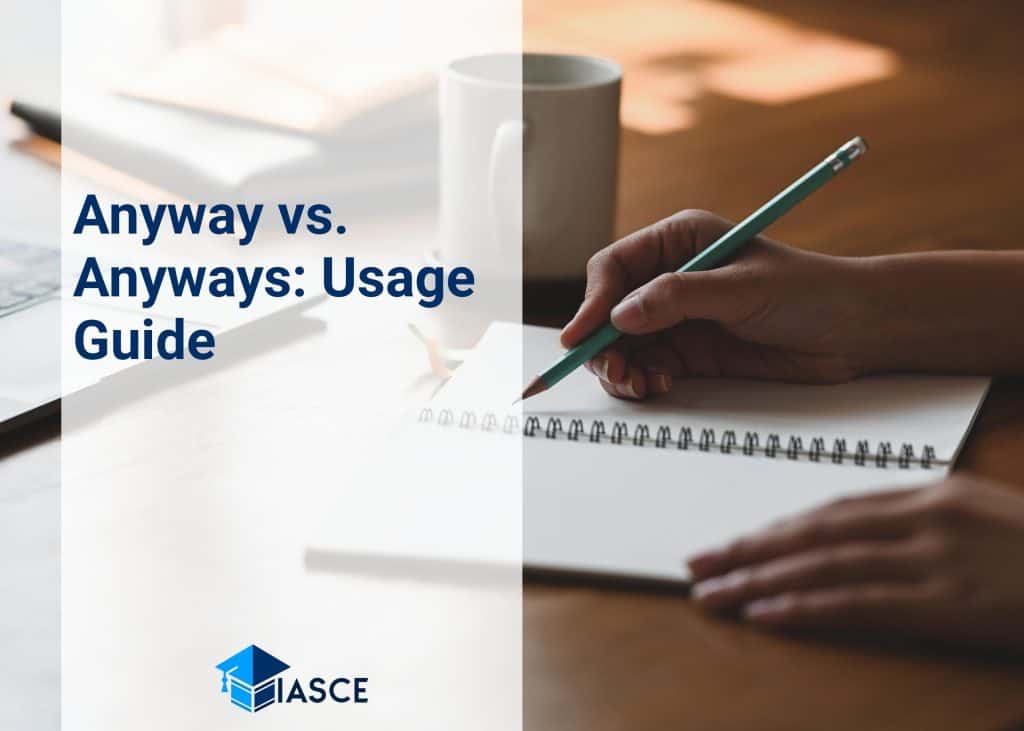Ever been stuck in a conversation, thinking: “Is it ‘anyway’ or ‘anyways’?” Well, you’re not alone. As language evolves, so does our use of seemingly interchangeable words like these. Understanding the difference between ‘anyway’ and ‘anyways’, can save you from awkward grammar mistakes and level up your communication skills.
While both words might seem identical at first glance – there’s a subtle but significant distinction. I’ll take you on a deep dive into these commonly used adverbs, helping to clear any confusion and make your writing shine with accuracy.
In this guide, we’ll explore their meanings, usage in sentences, and my top tips for remembering when to use each term accurately. So next time you find yourself wondering “Anyway or anyways?”, rest assured – you’ll know exactly which one to pick!
| Word | Example | Context |
|---|---|---|
| Anyway | “I didn’t really like the pie, but I ate it anyway.” | “Anyway” is an adverb used to change the course of the conversation, to signify ‘in any case,’ or ‘regardless.’ |
| Anyways | “Anyways, let’s move on to the next topic.” | “Anyways” is often used in the same context as “anyway,” but it is less formal and more common in spoken English. |
| Anyway | “Anyway, as I was saying before we got interrupted…” | “Anyway” is used to get back to the point after a digression. |
| Anyways | “It’s too late to go out now, anyways.” | “Anyways” is often used to conclude thoughts or statements in informal conversations. |
| Anyway | “He wasn’t prepared, but he decided to go on stage anyway.” | “Anyway” can be used to convey the idea of doing something despite conditions not being favorable. |
| Anyways | “Anyways, I don’t think that’s a good idea.” | “Anyways” can start a contradiction or add to the previous statement, especially in informal dialogue. |
| Anyway | “They don’t pay me enough, but I love my job anyway.” | “Anyway” signifies ‘in any case’ or ‘despite something.’ |
| Anyways | “I’m not sure why she was upset. Anyways, it’s not my problem.” | “Anyways” is frequently used in spoken English to transition to a new subject. |
| Anyway | “My decision is final. Anyway, it’s not up to you.” | “Anyway” is used to express a degree of dismissiveness or finality. |
| Anyways | “Anyways, I better get going. It’s getting late.” | “Anyways” is commonly used to draw conversations to a close in casual speech. |
Understanding the Difference: ‘Anyway’ vs. ‘Anyways’
Let me dive right into the heart of the matter — ‘anyway’ and ‘anyways’. These words might seem interchangeable, but in fact, there’s a subtle difference that can impact their usage.
To begin with, let’s define each term. The word ‘anyway’ is an adverb and it generally means “in any case” or “regardless.” You’ll often see it used to change a conversation’s direction or to return to a previous point. For example:
- I don’t know why he didn’t come to the party. Anyway, did you watch the game last night?
On the other hand, we have ‘anyways’, which has drawn quite some controversy among grammar enthusiasts! It’s considered by many as a colloquial variant of ‘anyway,’ typically found in informal speech or dialects.
Now here’s where things get interesting – place and context play significant roles when deciding between using ‘anyway’ and ‘anyways’. In formal writing or professional communication, it’s better to stick with ‘anyway’. On the flip side, if you’re chatting informally with friends or writing casually online, using ‘anyways’ won’t likely raise too many eyebrows.
Here are some examples of how these words can be used in sentences:
| Use | Example |
|---|---|
| Anyway | Regardless of what happened, I need to finish my assignments anyway. |
| Anyways | I don’t think that’s right but anyways, what time do we meet tomorrow? |
While both terms share similar meanings and applications, remember that your choice between them should rely on your audience’s expectations and your desired level of formality.
Proper Usage in American and British English
Let’s dive right into the discussion of “anyway” versus “anyways”, particularly focusing on their usage in American and British English.
In American English, “anyway” is the standard form. It’s predominantly used to mean “in any case,” “nevertheless,” or “regardless.” For instance, you might hear someone say, “I don’t know if it’ll rain today; anyway, I’m bringing an umbrella just in case.” This demonstrates a shift in topic or a return to a previous point.
However, you’ll also come across “anyways” in informal speech or writing across America. Generally speaking, it carries the same meaning as ‘anyway,’ but it’s seen as more colloquially casual.
Moving towards British English, there’s a slight difference. In Britain, “anyway” without the ‘s’ at the end is overwhelmingly preferred for both formal and informal contexts. The use of “anyways” isn’t as common here as it is stateside.
To illustrate these differences visually:
| Anyway | Anyways | |
|---|---|---|
| US | ✔️ | ✔️ (Informal) |
| UK | ✔️ | ❌ |
Remember that context matters! If you’re drafting a professional email or academic paper regardless of location, stick with ‘anyway‘. Reserve ‘anyways‘ for informal chats with friends or when emulating conversational tone within written pieces.
Lastly, while we’re discussing “Anyway vs Anyways“, let me remind you that language evolves constantly. Today’s slang could be tomorrow’s norm! However, knowing how these words are currently perceived helps us make informed choices about our own language use.
In Conclusion: Choosing Between ‘Anyway’ and ‘Anyways’
After delving into the nitty-gritty of “anyway” and “anyways”, it’s time to make a choice. Your decision should hinge on two main factors:
- Formality: If you’re aiming for a more formal tone, always opt for “anyway”. It’s widely accepted in professional or academic settings.
- Region: Consider where your audience is based. For instance, American English favors “anyway”, while ‘anyways’ finds more acceptance in casual conversations.
To illustrate these points, I’ve created a handy table:
| Context | Preferred Usage |
|---|---|
| Formal | Anyway |
| Casual | Anyways |
| U.S | Anyway |
On another note, many people ask whether one form is grammatically correct while the other isn’t. Let’s get this straight – both are grammatically acceptable! However, given that ‘anyway’ is more universally embraced and less likely to raise eyebrows, I’d advise sticking with it most times.
At the end of the day, language evolves. What may seem incorrect today could become standard tomorrow (think about how internet slang has infiltrated our everyday language!). So if you find yourself using ‘anyways’, don’t sweat it too much!
Remember my advice when you’re choosing between ‘anyway’ and ‘anyways’. Use what fits best for your intended audience and context – just like any other aspect of writing!

